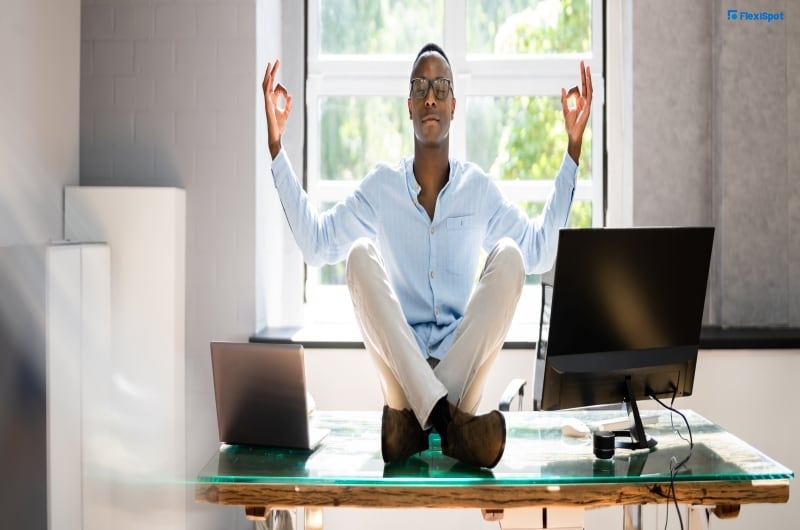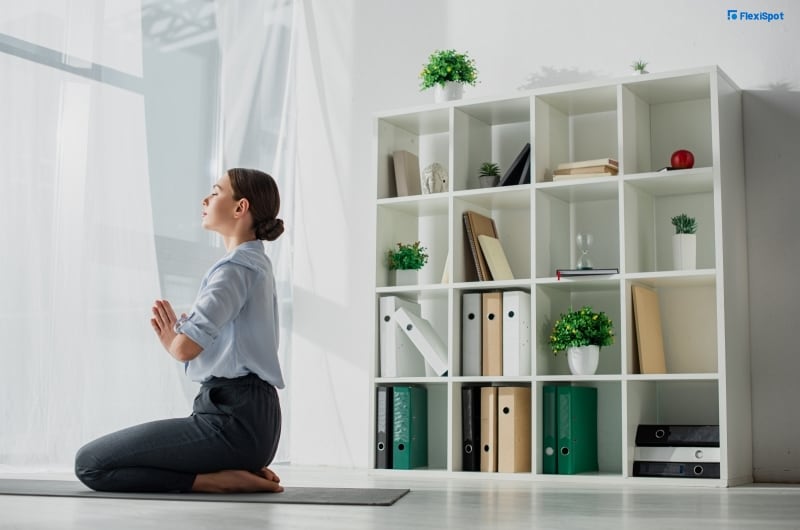The relationship between mindfulness and mental wellness has been well established. A mindfulness practice has always been suggested by therapists to their patients who experience severe depression episodes or persistent worry.
Antidepressants, mood stabilizers, and other similar medications won't be the only ones prescribed for better mental health. The doctor would advise frequent exercise, getting the recommended amount of sleep, keeping a journal, and scheduling even just five minutes a day for meditation as part of a full shift in lifestyle. Small behaviors have a significant impact.

How to Meditate
Many people are still unaware of the true benefits of meditation. Andy Puddicombe, the creator of the meditation software Headspace, describes it as a method for developing awareness and a sound sense of perspective. In order to finally have a better understanding of our brains and the way it processes thoughts in the future, meditation helps us to watch our ideas without passing judgment.
Meditation involves the practice of mindfulness, or the capacity to be totally present. Regrets from the past and concerns for the future are frequently the root of anxious thoughts. Focusing on the present moment serves as a reminder to move forward step by step and to remember that the sole thing a person can control is how they feel and act right now.

Reason to Meditate
Studies have shown that meditation improves focus and alters how we interpret our ideas. By meditating regularly, we develop the ability to modulate the extent of how our unfavorable emotions impact us and prevent them from controlling our behavior. We usually become calm people with better and more engaged thoughts when we become attentive of all we are doing right now.
For instance, Monica chose to cook homemade pasta because she will be hosting visitors for dinner. Her frequent mindfulness practice would have taught her to concentrate on the work at hand, to ensure the dough would rise properly, rather than stressing about what the visitors would think of her space or if they would enjoy the supper she would be cooking.
Studies have also indicated that frequent meditation aids in improving sleep quality, decreasing stress hormones, lowering blood pressure, alleviating stress, and reducing anxiety.

Why Practice Meditation at Work
We work eight hours a day, five days a week, and this takes up the majority of our time. We interact with coworkers, interact with people of various personalities, report to a boss, and do our best to satisfy our clients' expectations. Work isn't always enjoyable in such a high-stress setting, particularly if we get burned out or excluded from our coworkers.
Four advantages of utilizing meditation are provided by Headspace: reduced stress, increased productivity and attention, simplified teamwork, and improved job satisfaction and engagement.
Science has established that meditation helps to rewire our brains so they can react to stress more effectively. We can improve our ability to control our emotions, find solutions to issues, as well as our learning and memory capacity, by consistently practicing meditation. We are more productive and efficient at work when we are present-focused and mindful.
For their staff, major corporations including Google, General Mills, Intel, Aetna, and Goldman Sachs offer tailored mindfulness and meditation programs. The necessity to emphasize mental health has been brought to light even more by the pandemic. Companies looking to make their workplaces healthier and better for their employees have shown more than a 500% surge in interest in Headspace, according to the company.

How to Practice Meditation at Work
Meditate somewhere quiet and clean.
You may find that your workplace is the ideal location for your mindfulness practice since you have the entire corner to yourself. Practice blocking out external noise and concentrating solely on the audio instructions during your guided meditation.
It will also be easier to meditate if your workspace is clean. You can install smart storage solutions to keep it tidy. You can organize your workplace basics and office supplies using storage cabinets. Cleaning your space also provides you time to practice greater awareness.
Choose a time that works for you and the duration of your meditation. Set it as fixed.
Maintaining streaks and forming habits require effort, but if you start today and consistently practice them, what was once a chore will ultimately become part of the your routine. It truly doesn't matter how much you meditate each day, but it does help you form an important habit. Choose a time restriction for your daily meditation that won't be too onerous for you and force you to stop the next day.
Turn off notifications and quit any open apps.
Stop being distracted by anything, including emails and texts from your coworkers and supervisor. In the end, you'll only be meditating for around 15 minutes. After your meditation session, handle them. For the next 15 minutes, you want to be able to concentrate solely on your breathing.
Sit back and relax.
Your body must be relaxed, with your feet flat on the floor, your hands on your lap, and your back straight. Flexispot offers the Soutien Ergonomic Chair that will minimize body pain and ultimately, give you comfort. In addition, the back and neck muscles are supported.
You can also take a seat in an Indian-style position on the ground or on a carpet. Put your hands on either side and slowly look around you without focusing on anything in particular.
Shut down your eyes.
You can concentrate better on your breathing and how stiff or calm your body feels when you can't see your immediate surroundings.
Count from 1 to 10 while keeping your attention on your breathing.
As you inhale and exhale, notice how your breath rises and falls. Start from the top if you become disoriented or lose count. If it helps, put your hand on your belly and feel your body compress and expand.
When your eyes are closed, examine your entire body.
Imagine a line going from the top of your head to the tips of your feet, as if you were being scanned by a machine. Repeat it until you are able to do it slowly. Simply go back to the area of the body where you stopped and scan it once more when you regain focus.